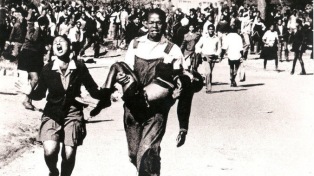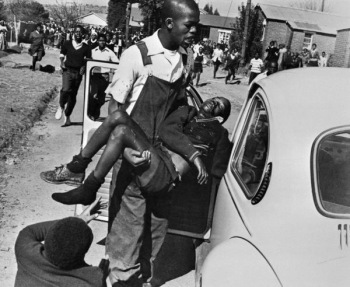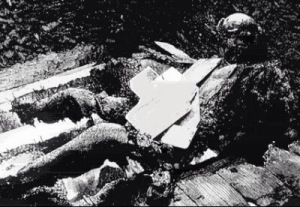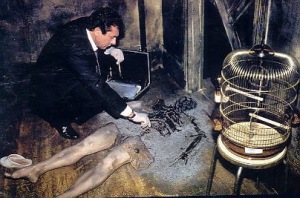
The Apartheid was a period of extreme segregation in South Africa beginning in 1948 and lasting until 1994. The word “Apartheid” translates literally to “the state of being separate”. During the Apartheid, citizens of South Africa were placed into one of four major groups: Black, White, Coloured or Indian, with the ‘Coloured’ and ‘Indian’ groups having many subdivision. South Aftica’s ruling party during this time, the National Party (NP), created laws to support a long-time goal of the NP; To discriminate against the black majority and give the white minority superiority. These laws banned the black population from doing business, living or owning land in ‘white’ areas. From 1960 -1983, 3.5 million non-white South Africans were removed from their homes and forced into segregated areas. They had no right to citizenship and instead became citizens of one of the ten self-governing ‘Bantustans’. The division of the Bantustans was tribal-based. This forced segregation and relocation is one of the largest mass-removals in modern history. Interracial marriage was criminalized during the Apartheid and in 1970, legislation was passed which prohibited any political representation for the Black population. Resistance grew in the 1960s as many Black citizens were arrested, beaten and killed while peacefully protesting Apartheid policies. In 1953 the ‘Bantu Education Act’ was passed, enraging many South Africans. As used in ‘Bantu Education Act’, “Bantu” is considered to be a highly inflammatory word having derogatory connotations against indigenous peoples of central or southern Africa who speak a ‘Bantu’, or Niger-Congo language. [In modern times “Bantu” is used as a neutral term for the various African languages of South Africa when speaking in generalizations] The Bantu Education Act required all South African students to learn the Afrikaan language regardless of their local language. Half of exams for students after elementary/early primary school would be written in Afrikaan. Being the language of leaders of the National Party, it was viewed by non-white citizens as the language of their oppressor. The Bantu Education Act prompted the beginning of many anti-Apartheid political movements and organizations including the South African Students Organization (SASO). During this time the Black Conciousness Movement (BCM) became more prominent in South Africa, as well.
Tensions caused by the Apartheid and the NP’s imposing of the Afrikaan language on South Africa’s youth rose to a climax on June 16, 1976 with the Soweto Uprising. Between 3,000 – 10,000 students (some modern estimates believe the crowd may have grown to as many as 20,000) participated in a peaceful protest organized by the South African Student’s Movement Action Comittee and supported by the Black Conciousness Movement. They gathered in Soweto, Johannesburg, carrying protest signs reading ‘Bantu Education- to Hell with it’ and ‘Down with Afrikaans’ while singing freedom songs. Many than began the march which would end at Orlando Soccer Stadium where there was scheduled to be a peaceful protest. Approximately fifty police officers halted protesters marching towards the stadium and told them to turn back but they refused. Police dispersed tear gas into the crowd and fired warning shots before opening fire into the crowd. Many ran for cover, others held their ground and began throwing stones at police in retaliation.
Fifteen year old Hastings Ndlovu was shot in the head by police and died after arriving at a nearby clinic. Hastings’s parents, brother and three sisters left Johannesburg shortly after his death but returned a few years later. His former home located at 7235 Thabete Street in Soweto, Johannesburg was marked with a blue plaque on June 16, 2012 in memorial of the boy. Thirteen year old Hector Pieterson was shot by police on the corner of Moema and Vilakazi Streets near Orlando West High School.
A fellow student, 18-year-old Mbuyisa Makhubo, picked Hector off the ground and began running to get him into the car of news photographer Sam Nzima. Nzima snapped a photo of Makhubo carrying Hector Pieterson as Hector’s 17-year-old sister, Antoinette Sithole ran alongside them.
Hector was placed into Sam Nzima’s car and driven by journalist Sophie Tema to a nearby clinic where he was pronounced dead upon arrival. What had begun in Soweto quickly spread across the nation of South Africa. By the end of the day on June 16, 1976 the government reported 23 deaths including two white police officers who were either beaten or stoned to death by the crowd. By the end of June 1976 the numbers had risen to 176 killed and thousands more injured, but modern estimates suggest approximately 700 people were killed in total; The Soweto Uprising had a major impact on South Africa’s socio-political landscape.

Sam Nzima’s iconic photo of Hector Pierterson. [Originally “Pitso”, the family adopted the surname “Pieterson” to pass as ‘Coloured’. During the Apartheid, ‘Coloured’ citizens received more privileges than ‘Black’ citizens.

“Victor Vinnetou”, believed to be Mbuyisa Makhubo, the student who carried Hector Pieterson.
“Victor” had been detained in Canada since August 10, 2004 for being found living in the country without citizenship or proper documentation. After uncovering “Victor Vinnetou”‘s past experiences matched those of Mbuyisa Makhubo from speaking about his experiences on June 16th to knowing specific details about the Makhubo’s family home in South Africa. The man was also found to have a moon-shaped birthmark on the left side of his chest which indicated to his living relatives “Victor” was in fact, Mbuyisa Makhubo. Following this discovery, the Department of Arts and Culture began working to bring Mbuyisa home to South Africa; However, after performing a DNA test, the results were found to be “inconclusive”. Raul said he was told by Paul Mashatile, the Minister of The Department of Arts and Culture at that time that the “inconclusive” results were announced as a way to buy more time for Mbuyisa to repatriate. Obviously, this is an incredibly emotional process for Mbuyisa Makhubo’s family and due to partial paralysis from a stroke in 2013 and being diabetic, Raul has not been involved in the process of bringing Mbuyisa back to South Africa since his initial involvement. Instead, Mbuyisa’s oldest sister, Nontsikelelo has taken over the process and is trying to reach out to the nation of France on behalf of the family to receive the assistance they need to retrieve Mbuyisa from Canada. The family is working to raise money to finally meet “Victor Vinnetou” in person and confirm his suspected identity. They plan to appeal to both the Canadian and South African governments to bring their long-lost brother home.
Both Hector Pieterson and Hastings Ndlovu were buried in the Avalon Cemetery in Soweto, Johannesburg. The Apartheid ended in 1994 when Nelson Mandela became the first black President of South Africa and the National Party’s rule ended. Mandela, who spent 27 years in prison for his role as a leader in the anti-Apartheid movement worked once again to eradicate the unjust laws put into place by the National Party once released from prison in 1990. Today in South Africa, June 16th is observed as ‘National Youth Day’, a day when the country honors young people and sheds light on the needs of students’.
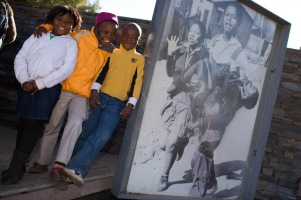 On June 16, 2015, the 39th anniversary of the Soweto Uprising, school children remembered the sacrifices made by Hector Pieterson, Hastings Ndlovu and other young protesters in 1976 by staging a reenactment of the bloody and pivotal day in South African history.
On June 16, 2015, the 39th anniversary of the Soweto Uprising, school children remembered the sacrifices made by Hector Pieterson, Hastings Ndlovu and other young protesters in 1976 by staging a reenactment of the bloody and pivotal day in South African history.
The following video features Antoinette Sithole discussing the events of June 16, 1976 and offers additional information on the death of Hector Pieterson.
The Post-Mortem Post is now on Pinterest!
If you love The Post-Mortem Post, please consider contributing on Patreon.com!
Follow us on Twitter @PostMortem_post & Like The Post-Mortem Post on Facebook
If you enjoyed this article, you might also like Fire Escape Collapse and Thich Quang Duc: Monk on Fire

